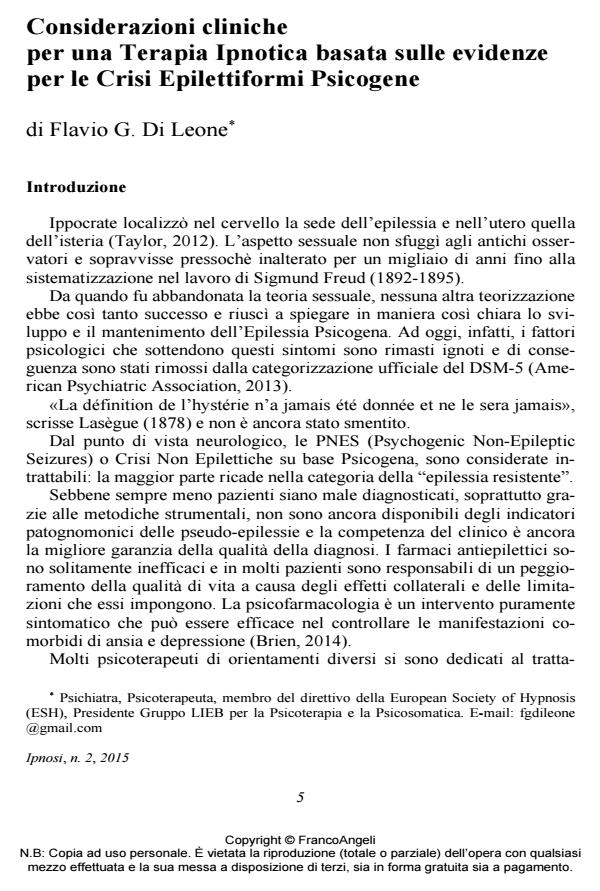Considerazioni cliniche per una Terapia Ipnotica basata sulle evidenze per le Crisi Epilettiformi Psicogene
Titolo Rivista IPNOSI
Autori/Curatori Flavio G. Di Leone
Anno di pubblicazione 2015 Fascicolo 2015/2
Lingua Italiano Numero pagine 27 P. 5-31 Dimensione file 130 KB
DOI 10.3280/IPN2015-002001
Il DOI è il codice a barre della proprietà intellettuale: per saperne di più
clicca qui
Qui sotto puoi vedere in anteprima la prima pagina di questo articolo.
Se questo articolo ti interessa, lo puoi acquistare (e scaricare in formato pdf) seguendo le facili indicazioni per acquistare il download credit. Acquista Download Credits per scaricare questo Articolo in formato PDF

FrancoAngeli è membro della Publishers International Linking Association, Inc (PILA)associazione indipendente e non profit per facilitare (attraverso i servizi tecnologici implementati da CrossRef.org) l’accesso degli studiosi ai contenuti digitali nelle pubblicazioni professionali e scientifiche
Etiology of PNES is still unknown. Nonetheless, evidences on its origin, course and therapy are growing. Hypnosis is historically known as effective therapy but results in the literature are lacking. Moving from the Ultra-short Hypnosis- based Treatment for Conversion Disorders by Camillo Loriedo, the author developed an intervention focused on PNES peculiar features. In the first part of the paper, the most relevant neurofunctional and psychological evidences will be reviewed and a interpretative hypothesis will be illustrated. In the second part, the Functional Disconnection Model will guide a manualization of the hypnotic intervention, with clinical reports and technical suggestions.
Parole chiave:Ipnosi, conversione, dissociazione, epilessia psicogena
Flavio G. Di Leone, Considerazioni cliniche per una Terapia Ipnotica basata sulle evidenze per le Crisi Epilettiformi Psicogene in "IPNOSI" 2/2015, pp 5-31, DOI: 10.3280/IPN2015-002001